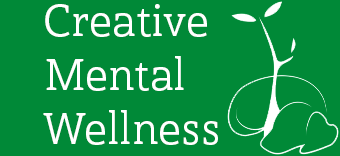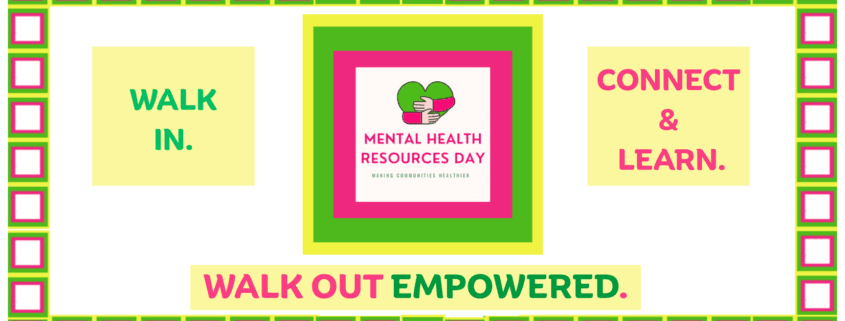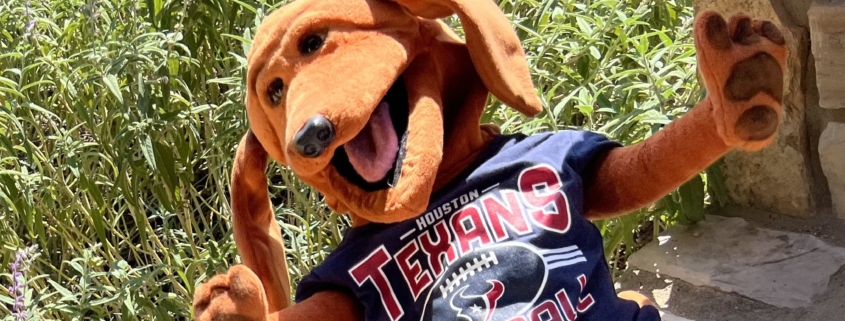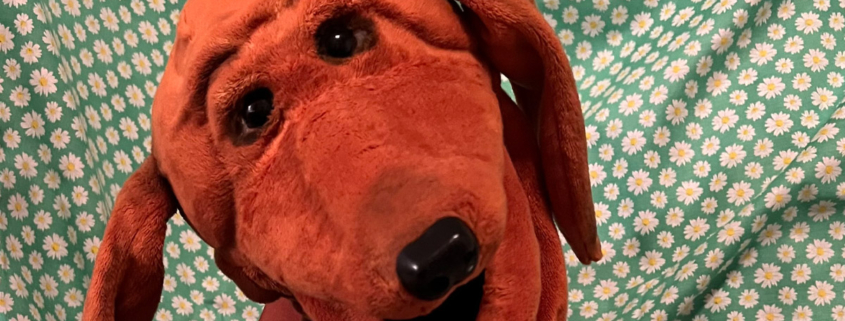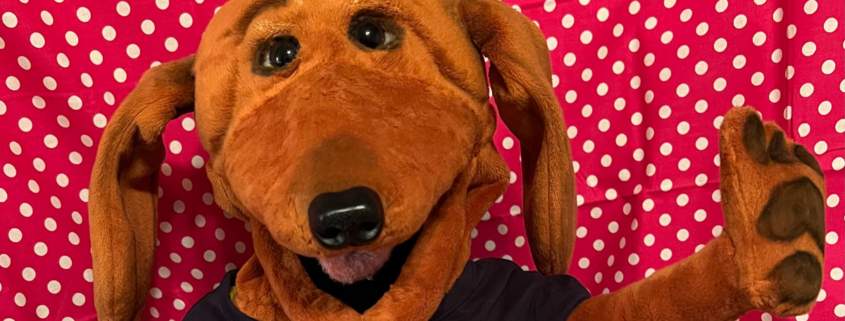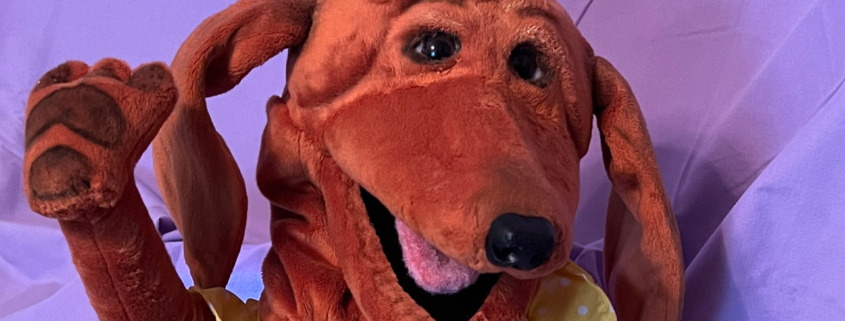Posts
December 2024 Newsletter
/0 Comments/in Blog/by CMWadminDecember 5 is Light Up a Life Day
Reduce Stress This Holiday Season
The holidays are known to be stressful, and can be even harder if you have lost a loved one you used to spend the holidays with. To help reduce stress around the coming holidays, there are a number of techniques you could try, like yoga and meditation, gratitude practices, baking, and spending time in good company. It can be difficult with the pressures to decorate, buy gifts, or host loved ones, but this season is also a good opportunity to appreciate what you have and those you love. If you choose to give gifts, try doing a gratitude practice beforehand – everyone could even write down what they are grateful for, if you don’t want to verbally say what you’re grateful for. Fostering a sense of gratitude can have positive effects on mental wellness and fortitude, thereby reducing stress and improving mood.
Nami also has great resources on managing your mental health during the holidays:
Surviving Painful Holiday Emotions
Avoiding Holiday Stressors
Mindfulness and Meditations for the Holiday Blues
DAISY’s Book Club
DAISY found Bowling Alone: The Collapse and Revival of American Community by Robert D. Putnam an interesting and informative read. It is, as the title suggest, about the lack of community in America, and some of the reasons Americans have shifted away from community, including politics, TV, and a decrease in church-goers. Many people may feel like social media and cell phones are the main cause, but the author says, “voting, giving, trusting, meeting, visiting, and so on had all begun to decline while Bill Gates was still in grade school.”
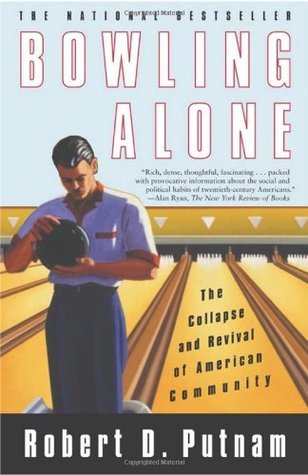
Updates in the Mental Health Sphere and DAISY’s World
Studies have shown that gratitude can reduce feelings of loneliness! If you are feeling lonely, try adopting a gratitude practice – whether you say, write or just think about what you are grateful for, it can help alleviate some of your loneliness.
Creative Mental Wellness has been accepted into the Kroger Community Rewards program! When you shop with your Kroger account, you can help support our mission!


Thank you for joining us on this mental health journey! Follow us on Instagram, Facebook or LinkedIn to stay up to date.
Your friend,

June 2024 Newsletter
/0 Comments/in Newsletter/by CMWadminJune
June is LGBTQ+ Pride Month!
June 27 is PTSD Awareness Day
Announcements
We are gearing up for Mental Health Resources Day 2025, to be held in Houston again. We are so grateful for our participants in our 2024 event, and hope to have even more speakers and more fun in 2025.
If you or someone you know would like to speak, provide sponsorship, or otherwise get involved with our MHRD 2025, you can respond to this email or reach out to seanda@proton.me
Please also share our flyer!

Just a Piece of You
How “just” puts a lid on you and those around you
“I am just a student.”
“They are just a cashier.”
“I am just a civil engineer.”
Most of us have found ourselves saying something like that. Whether we’re trying to put ourselves down or simply downplay our accomplishments, the word “just” tends to sneak into our vocabulary more often than we realize. But what if I told you that every time you use that word, you’re inadvertently putting a lid on your own potential and diminishing the uniqueness of those around you?
In a world where labels often define us, it’s easy to fall into the trap of reducing ourselves and others to mere titles or roles. But the truth is, behind every “just” lies a wealth of experiences, talents, and aspirations waiting to be acknowledged and celebrated.
Take the example of a student. Sure, they may spend their days buried in textbooks and lectures, but they’re also dreamers, thinkers, and future leaders in the making. By slapping a “just” in front of their identity, we limit their potential and overlook the countless ways in which they contribute to the world around them.
Similarly, when we refer to someone as “just a cashier” or “just a civil engineer,” we fail to recognize the complexity of their skills and the value they bring to their respective fields. Behind the uniform or the job title lies a person with a unique story, passions, and talents that extend far beyond the confines of their profession.
But it’s not just about how we perceive ourselves—it’s also about how we perceive others. When we label someone as “just” anything, we place them in a box, effectively shutting out the possibility of seeing them for who they truly are. This not only limits our understanding of their potential but also perpetuates stereotypes and undermines the richness of human diversity.
So the next time you catch yourself using the word “just,” pause for a moment and consider the implications. Instead of diminishing yourself or those around you, embrace the full spectrum of human potential and celebrate the uniqueness of every individual.
Thank you for joining us on this mental health journey! Follow us Instagram, X, Facebook or LinkedIn to stay up to date.
Your friend,

May 2024 Newsletter
/0 Comments/in Newsletter/by CMWadminMay
May is Mental Health Awareness Month!
This month especially, take care to inform yourself and others about mental health. You can keep an eye out for local events sponsored by mental health non-profits and other organizations like the National Alliance on Mental Illness (NAMI). NAMI holds walks in major metro areas, a convention, and great social media campaigns that you can participate in from your living room! There are numerous companies and organizations working to provide helpful information this month – here are some that we think you should check out:
National Alliance on Mental Illness
Substance Abuse and Mental Health Services Administration
National Institute of Mental Health
Mental Health America
American Psychiatric Association
National Council for Mental Wellbeing
Giving a Warm Welcome to Summer
Physical activity tips to beat the heat
As the semester draws to a close and summer vacation approaches, it is becoming increasingly hotter across the United States. Because of the heat, it can be more uncomfortable and difficult to exercise, especially if you lack access to an indoor gym. There are a myriad ways to beat the heat and keep your physical health in mind this summer though!
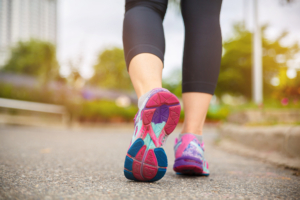
Hydration is of course the most important thing to keep in mind as you sweat or spend time in the sun. Make sure to drink plenty of water before, during, and after exercise and outdoor activities. It can also be beneficial to consume electrolyte-replenishing drinks and foods, like pickle juice and bananas. Even swimming uses your body’s water stores, so plan to be drinking a lot of water as you stay active this summer.
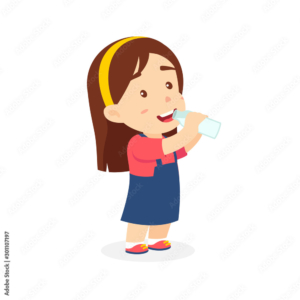
Timing your outdoor activities can help you avoid the hottest parts of the day. Early in the morning is typically the coolest part of the day, and also touts the lowest UV index, so you can worry less about getting sunburnt as well. There are many weather apps and websites that can show you the temperature and UV index by the hour, so you can plan out your day based on the given information; it may not be entirely accurate, but these weather apps give you the best chance for minimizing heat and UV exposure.
Indoor workouts are also a great option, even if you do not have access to equipment. There are so many great Youtube videos for workouts tailored to a variety of different needs, whether they are no equipment, limited mobility, or “beginner friendly.” Pilates and yoga can be great starting points. If a certain video or “influencer” doesn’t fit your physical or mental needs, look for some that do! It is important to find exercises that motivate you, make you feel good, and are good for your wellbeing.
It is great to keep your body moving and to keep physical exercise in your life when possible, but as the seasons change, our bodies and mindsets change. It is okay to change your workout routine, and we recommend keeping hydration, timing, and alternative exercises in mind in the coming months.
DAISY’s Random Acts of Kindness
These are some ways DAISY is spreading kindness this month

- Helping a friend clean. DAISY helped her friend do some Spring cleaning! Cleaning with a friend is not only quicker, but more fun!
- Picking up litter. When DAISY goes for a walk and sees a piece of trash, she safely disposes of it! She put in extra effort this month to pick up more litter when she is out of the house. Remember: safety first. Wear gloves when picking up litter, and be extra careful with any glass.
- Donating the clothes she no longer wears. DAISY’s spring cleaning made her realize she has some clothes that no longer fit her or her her style. She has no ideas to “upcycle” or alter these items to help fit her life currently, so she is going to donate them to a local secondhand shop.
The Random Acts of Kindness Foundation has some other great ideas, and they even have a calendar with a different act of kindness every day!
Thank you for joining us on this mental health journey! Follow us Instagram, Facebook or LinkedIn to stay up to date.
Your friend,

April 2024 Newsletter
/0 Comments/in Newsletter/by CMWadminApril
April is National Stress Awareness Month and National Minority Health Month
April 2nd is Autism Awareness Day
April 7th is World Health Day.
April 12th is the Day of (No) Silence.
Stress Survival Guide
How to cope with stress
April is appropriately deemed the National Stress Awareness Month… taxes, end of the semester approaching, allergies. We’re not going to tell you not to stress about these things -stress is a part of life and manageable stress can even be beneficial for your health. We are going to tell you some ways to help cope with and reduce the effects of your stress.
Physical health is a big part of managing stress, from exercise to nutrition and sleep. Physical activity is our number one recommendation for stress management! Especially if you can pair exercise with nature. Taking a walk around a park, roller skating at a skate park, hiking, and doing yoga in your backyard are all great examples of how to pair exercise with nature to help produce “happy hormones” and reduce the feelings of stress on your body. There are other ways to get moving though – dancing, cleaning, playing tag, and numerous other activities are great for your physical and mental wellbeing. Eating enough nutrient-rich foods is also important; without enough of the right nutrients, our bodies struggle to handle stress. Fiber has been shown to be incredibly important in maintaining gut health, which in turn helps take care of our brain’s health! Leafy greens, fruits and vegetables are great sources of fiber and should be incorporated into your diet when possible. Your diet is vital for your physical and mental health. Sleep is also very important, because our bodies use sleep to maintain our brains, immune systems, and memories. Getting enough sleep (typically 7-9 hours are recommended) and maintaining a consistent sleep schedule can be beneficial for your mental health and ability to manage stress. Your physical health is one of the most important factors in coping with stress.
DAISY’s Reading
The Cuckoo’s Egg: Tracking a Spy Through the Maze of Computer Espionage by Clifford Stoll
The Cuckoo’s Egg is about an astronomer (Cliff Stoll) working as a systems manager at Lawrence Berkley Lab who finds an unwelcome visitor on Lawrence’s computer systems. With some help from the CIA, FBI, and foreign intelligence agencies, he unveils the hacker and the people supporting them.
This book is a bit of a long read but it is quite a page-turner! DAISY wanted to keep reading to find out what Stoll and the hacker would do next. A really interesting read from a time before the internet was as accessible as it is now.

Thank you for joining us on this mental health journey! Follow us Instagram, Facebook or LinkedIn to stay up to date.
Your friend,

February 2024 Newsletter
/0 Comments/in Newsletter/by CMWadminFebruary
February is International Boost Self Esteem Month, with
Random Acts of Kindness Week (Feb 11 – Feb 17) and
National Eating Disorders Awareness Week (Feb 26 – March 3)
February is a great month to reconnect with our mental health practices, our friends, and nature. Despite the cold and gloom that many Americans are feeling, February can serve as a month to boost our mental wellness. As the New Year’s resolutions and accompanying excitement subside, try to practice self compassion and self care.
Connection as a Mental Health Tool
How connection to others can benefit your mental health
Humans are social animals. We need to interact with others to thrive and survive. Connecting to others can provide us with many benefits, such as:
- Improving our ability to recover from stress, anxiety, and depression (ie increasing RESILIENCE). Social connection can help us cope with negative emotions, provide us with emotional support, and enhance our ability to deal with adversity. When we get to know people–and we allow them to know us–we can share our burdens and offer assistance and encouragement for navigating the travails of life. Linking ourselves to others can lead to increasing our “cheering section”; people become invested in us and can provide much-needed encouragement. This process strengthens our ability to recover from challenging times.
- Promoting healthy habits and behaviors. Social connection can motivate us to eat well, exercise regularly, and maintain a healthy weight. When we know people care about us, we perceive we are valued and “seen”; feelings of worthiness can enable us to make healthy-er choices for our physical and mental health. Connecting to others can even reduce the risk of engaging in violent and suicidal behaviors.
- Improving our sleep, well-being, and quality of life. Social connection can help us relax, enjoy life, and feel satisfied. It can also improve our self-esteem, confidence, and happiness. Spending time with others allows us to discuss challenges and “vent” frustrations. Having a trust-worthy outlet to express emotions–even the not-so-good ones (in a respectful way)–can prevent ruminating on them and/or an escalation of those emotions. Having a trusted “sounding board” (i.e. someone whose intentions you know are positive/”good”) gives us the opportunity to obtain feedback and gain understanding through others’ perceptions.
- Reducing our risk of chronic diseases and increasing our longevity. Social connection boosts the immune system, lower blood pressure, and protects us from cardiovascular diseases, diabetes, and cancer. When we feel better emotionally, we often feel better physically, too. Experiencing connection can increase our sense of well being, which enhances our immune system and reduces inflammation in our bodies. It can also help us live longer, as people with stronger social connections are 50% more likely to survive than those with weaker connections.
DAISY’s Random Acts of Kindness
These are some ways DAISY is spreading kindness this month

- Donating a book to a Little Free Library. DAISY finished reading Crying in H Mart by Michelle Zauner. She really enjoyed it, and wants others to enjoy it as well, so she found a Little Free Library near her house.
- Writing a letter to a loved one. Handwritten letters can brighten up someone’s day. Could you write a letter to your best friend, a parent, or teacher?
- Taking a walk with her friend. This simple act is great to get DAISY and her friend outside, and allow them time to hang out in person.
The Random Acts of Kindness Foundation has some other great ideas, and they even have a calendar with a different act of kindness every day!
Thank you for joining us on this mental health journey! Follow us Instagram, Facebook or LinkedIn to stay up to date.
Your friend,

January 2024 Newsletter
/0 Comments/in Newsletter/by CMWadminHappy New Year!
We hope 2024 is off to a good start for you all.
Racing Thoughts?
How to combat anxious thoughts and patterns
If at times you have difficulty slowing your thoughts, YOU ARE NOT ALONE!💚 Racing thoughts–relentless, fast-moving, and uncontrollable thoughts that appear one after another –at “best” are frustrating and at worst cause disruption in managing mental health symptoms and can negatively impact one’s quality of life. While racing thoughts can be a symptom of various mental health conditions, including bipolar disorder, anxiety, and depression, they can also be just an irritating annoyance. Racing thoughts can cause impediments in daily life, including difficulty concentrating, insomnia, anxiety, and stress. They can also interfere with daily life and affect an individual’s ability to function normally. But…there IS good news! Racing thoughts can be successfully managed.
To avoid racing thoughts, there are several things you can do. One of the most effective ways to manage racing thoughts is to practice mindfulness meditation. Mindfulness meditation involves focusing on the present moment and observing one’s thoughts without judgment; this technique can help in becoming more aware of your thoughts and feelings and learn to control them better. Even going to a quiet place for a brief period of time be helpful. Deep breathing and focusing on something that usually makes you happy (like your child or a pet or an activity you always enjoy) is another easy-ish “tool” to use to gain control over chaotic thoughts.
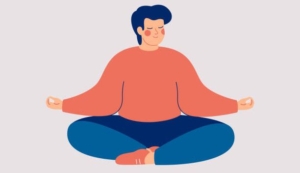
One way to help prevent racing thoughts is to engage in physical exercise regularly. Exercise has been shown to reduce stress and anxiety levels and improve mood. It can also help individuals sleep better at night, which can reduce the frequency of racing thoughts.
Also, when we exercise, our bodies create chemicals (neurotransmitters) that help us feel better. If all you can do is go outside and take a walk, you can change your mood and redirect your attention and thoughts.
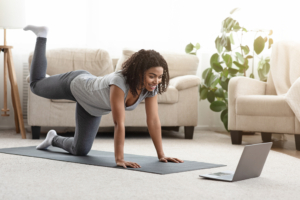
For persistent racing thoughts that are difficult to manage, cognitive-behavioral therapy (CBT) is a method that professionals/mental health care providers can utilize to help people manage their undesirable and domineering thoughts. CBT is a type of therapy that helps individuals identify negative thought patterns and replace them with positive ones. This technique can help individuals learn to control their thoughts better and reduce the frequency of racing thoughts.
Racing thoughts–whether obsessive-compulsive thoughts, or a flight of ideas, or rumination–can vary in severity and be a challenging symptom of various mental health conditions. However, there are several things that individuals can do to manage them effectively. Practicing mindfulness meditation, engaging in physical exercise regularly, and seeking professional assistance via cognitive-behavioral therapy are all effective ways to avoid and manage racing thoughts.
What’s DAISY Reading?
Crying in H Mart by Michelle Zauner
DAISY is reading Crying in H Mart by Michelle Zauner. She has really enjoyed reading this memoir. Zauner is a Korean-American who lost her mom to cancer when she was younger, and she feels a particular connection to her mom, culture, and childhood through food. As a lover of food and humans, DAISY feels really moved by this book. It has made her laugh, cry in her own puppet way, and appreciate her mom a little more. Michelle Zauner is also in a band called “Japanese Breakfast.”

Thank you for joining us on this mental health journey! Follow us Instagram, Facebook or LinkedIn to stay up to date.
Your friend,

November 2023 Newsletter
/0 Comments/in Newsletter/by CMWadminUpdates!
Website debut and Mental Health Resources Fair
We are so excited this month to debut our new website! A wonderful team of volunteers has been working hard and are prepared to debut the official Creative Mental Wellness website. Our website will be used to provide further updates on our organization, the Mental Health Resources Fair, and all things DAISY. You can visit the website here or by going to www.creative-mental-wellness.com. We are moving forward with the Mental Health Resources Fair so that attendees can learn about local, state, and national mental health resources. This event will be held in Houston on January 13th, 2024. Save the date!

Día de los Muertos (Day of the Dead)
How Celebrating Dia de los Muertos Can Heal
Día de los Muertos–or Day of the Dead–is a Mexican holiday that is celebrated on November 1st and 2nd. A time to honor and remember loved ones who have passed away, the holiday is a celebration of life AND death. It is believed that the spirits of the dead return to the world of the living to be with their families and friends.

The significance of the day lies in the belief that the dead would be insulted by mourning or sadness; instead, it is a time of celebration and joy. Families build altars or ofrendas in their homes and decorate them with flowers, candles, photographs, and other items that the deceased enjoyed in life. The altars are meant to welcome the spirits of the dead back to the world of the living and to show them that they are still loved and remembered.
One of the most significant items used in the decoration of the altars is marigolds. These bright orange flowers are believed to guide the spirits of the dead to the altar. Marigolds are also used to create a path from the cemetery to the altar, so the spirits can find their way home. The strong scent of the marigolds is said to help the spirits find their way back to the world of the living.
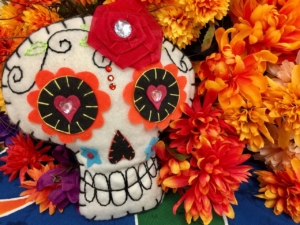
The holiday is celebrated with music, food, and parades. People dress up in costumes and paint their faces to look like skulls. The most famous symbol of the holiday is the sugar skull, which is a skull-shaped candy that is decorated with bright colors and patterns. Sugar skulls are often placed on the altars as an offering to the spirits of the dead.
Celebrating Day of the Dead can be a healing experience as it provides an opportunity to remember and honor loved ones who have passed away. In addition, this special day of remembrance reminds us that death is a natural part of life and that our loved ones are always with us in spirit. It is a time to celebrate their lives and to reflect on the memories that we shared with them. This can help us to feel more connected to our loved ones and to find comfort in the knowledge that they are still with us in spirit.The holiday is a reminder .
According to an article by The Healthy, Day of the Dead traditions support the idea that our relationship with the deceased isn’t over; it’s simply changing. Grief experts say that having a continued relationship can be healing. The article suggests looking for ways to continue the relationship with our loved ones that are comfortable for us.
In addition, an article by Psychology Today suggests that after-death communication experiences may even promote healing. These experiences may provide healing from deep trauma unmatched by traditional forms of grief work, or they may be soothing in experiences of less intense grief.
Participating in Day of the Dead celebrations can also be a positive impact on our mental health. It is a time to come together with family and friends and to celebrate life in a shared experience.. This can help us to feel more connected to our community and to find comfort in the knowledge that we are not alone in our grief.
The Power of Volunteering
Volunteering is the act of giving one’s time, skills, and energy to help others without expecting anything in return. It is a noble and rewarding way of contributing to the well-being of society and making a positive difference in the world. But volunteering is not only beneficial for the people and causes that receive the help; it is also immensely valuable for the person who volunteers.
While the term sounds very “other-focused,” service to others actually enhances many aspects of a person’s life. Volunteering helps the person who volunteers by providing opportunities to develop new skills, gain experience, enhance resumes, and advance careers. For example, by volunteering in a hospital, one can learn about medical procedures, patient care, and health administration. By volunteering in a school, one can improve their teaching, communication, and leadership skills. When volunteering for a nonprofit organization, one can gain insight into social issues, fundraising, and project management. These skills and experiences can be useful for personal and professional growth as well as opening up new opportunities in the future. As a side benefit, volunteering provides the volunteer with an opportunity to create relationships that can potentially aid the person professionally.
Improving mental and physical health is another positive outcome of volunteering. Volunteering can reduce stress, combat depression, keep the mind stimulated, and provide a sense of purpose. Research shows volunteering can stimulate the release of endorphins, the natural feel-good hormones, in the brain and creates a “helper’s high” that boosts the mood and self-esteem of the volunteer. Volunteering can also foster social connections, which are key for increasing happiness and well-being. By meeting new people, making friends, and building networks, the volunteer can feel less lonely and isolated and more supported and valued. If a person tends to lead a rather sedentary lifestyle, volunteering can help increase physical activity, which can improve the cardiovascular, immune, and nervous systems. By staying active and engaged, the volunteer can prevent or delay cognitive decline, lower the risk of chronic diseases, and increase their lifespan.
Enabling a person to find meaning and fulfillment in their life is yet another benefit of being a helper. The volunteer can discover their passions, interests, and values and align them with a cause that matters to them. By choosing a volunteer role that matches their personality, skills, and goals, the volunteer can feel more motivated and satisfied with their work. Volunteering can also help the volunteer to make a positive impact on the world and leave a lasting legacy. By seeing the results of their efforts, the volunteer can feel proud and accomplished and know that they have made a difference in someone’s life or in a community.
Another possible way service to others benefits the volunteer is a financial one. Volunteering for events–like the Super Bowl or a concert–affords those who might not have it in their budget to attend the event (as a paying patron) the opportunity to get to have the experience.
There are many different types of volunteering roles available for anyone who wants to help others and themselves. Some of the most common and popular volunteering roles are:
- Tutoring or mentoring children or adults who need academic, personal, or professional guidance.
- Providing companionship or assistance to seniors, people with disabilities, or people who are ill or isolated.
- Serving food, clothing, or shelter to people who are homeless, hungry, or in need.
- Advocating or raising awareness for a social, environmental, or political cause that one cares about.
- Cleaning, restoring, or conserving a natural or historical site that one values.
- Fundraising or donating money, goods, or services to a nonprofit organization that one supports.
- Organizing or participating in a community event, such as a festival, a parade, or a sports game, that brings people together and celebrates diversity and culture.
- Ushering at a local venue for performing arts.
These are just some examples of the powerful and transformative way volunteering can make a difference. There are many more opportunities and options available for anyone who wants to get involved and give back. The most important thing is to find a volunteer role that suits one’s interests, abilities, and availability and that makes one happy and fulfilled. You can look for local organizations and events to volunteer at, or use websites like Volunteer Match to help you find the right opportunities.
Volunteer Spotlight
One of the volunteers at Creative Mental Wellness volunteers at her local wild animal rescue center. She loves animals and likes supporting this organization. It is very rewarding for her because she gets to support the organization, while interacting with cute critters, like these raccoons!

Resilience and Management
The most pragmatic approach for dealing with mental health challenges
Resilience and management are two important goals for people dealing with mental illness. Resilience refers to the ability to adapt to difficult situations and cope with stress, adversity, or trauma. Building resilience can help protect individuals from various mental health conditions such as depression and anxiety. It can also help offset factors that increase the risk of mental health conditions, such as being bullied or previous trauma.¹
Management, on the other hand, refers to the ability to manage symptoms of mental illness and improve overall quality of life. Management strategies may include medication, therapy, self-care, and support from family and friends.²
Tactics for building resilience are actually similar to those utilized for managing symptoms associated with mental health challenges/mental illness. To build resilience–as well as manage symptoms associated with mental health challenges–individuals can take several steps, such as:
- CONNECTING with others
- VOLUNTEERING
- Practicing self-care activities, such as meditation or exercise1
- GOING OUTDOORS is another easy-ish, inexpensive way to increase resilience; fresh air and sunshine as well as the natural beauty of the outdoors is an important “tool” in our work for mental health management.
- To manage symptoms of mental illness, people can obtain help from a healthcare provider to develop a treatment plan that works best for them.²
It’s important to note that building resilience and managing symptoms of mental illness is a process that takes time and effort. It’s also important to seek support from family and friends when needed (if possible).
Having grace with yourself is the best approach. Just acknowledging you’re struggling is tough to do. And unfortunately, there’s no antidote for mental health challenges nor cure for mental illness. Taking each day–you know the cliche of “one day at a time”–really IS the best “advice.” Dealing with life’s challenges is not easy…which is why it’s so important to be kind and respectful but accountable to yourself. (And in conjunction with CONNECTION–”commiserating” with others who are challenged with similar issues CAN be helpful. You can support one another in dealing with obstacles. That’s called a SUPPORT GROUP, right????😉)
For people dealing with mental health challenges/mental illness, setting resilience and management as goals can be effective. Building resilience can help protect individuals from various mental health conditions while management strategies can help improve overall quality of life. By working together with healthcare providers and loved ones, individuals can build resilience and manage symptoms of mental illness effectively.
DAISY Practices
spending time outdoors
DAISY spent time at a pumpkin patch to breathe fresh air, enjoy a walk, and chat with her friend Seanda. This fall, see if you can find local pumpkin patches with pumpkins of all shapes, sizes, and colors.
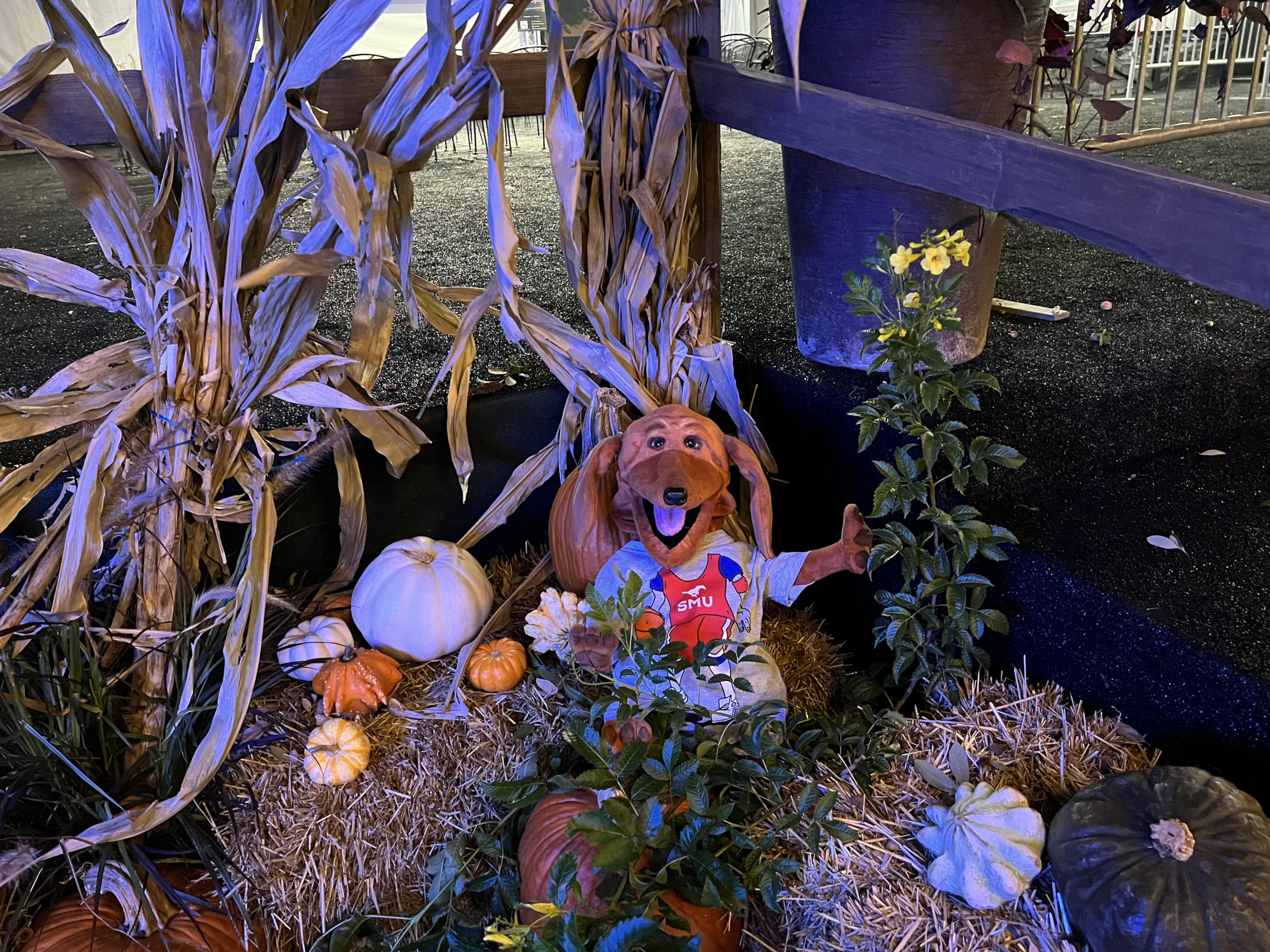
Thank you for joining us on this mental health journey! Follow us Instagram, Facebook or LinkedIn to stay up to date.
Your friend,

September 2023 Newsletter
/0 Comments/in Newsletter/by CMWadminWelcome to our First Newsletter!
Introducing DAISY the Mental Health Dachshund (and Her Human Seanda)

My name is DAISY, and I’m known as “DAISY the Mental Health Dachshund.” I’d like to introduce myself and Seanda (that’s the human I work with, and–btw–her name is pronounced SHAWN-DUH). We decided to work together because we noticed how many people–children, youth, and adults–are struggling with/suffering from mental health issues. We decided that we could put our knowledge, experience, and talents together to create a way to educate the public about mental health topics and mental illness while we try to normalize discussing such topics and decrease the stigma of mental illness.
BTW- we practice what’s called RADICAL TRANSPARENCY. (We give as much information as we can in an effort to PURPOSELY decrease anxiety– because people usually feel better when they feel there’s no hidden agenda and a person is being authentic.) If you notice that I sometimes OVER-INFORM (give a little too much information about the topic at hand), YOU’RE RIGHT (and “getting” our nifty STYLE)!
First, I’ll tell you a little about Seanda. For a human, she’s pretty nice. Her mother died when she was 16 (I can’t count very high, but I remember she’s in her 50s now), she’s an only child, and she struggled with infertility (and was unable to conceive following treatments). Following her mother’s death in 1985, Seanda perceived that mental health problems/mental illness was a personal, shameful weakness. Her journey accessing mental health care started then, and she’s been very disappointed in the amount of progress in the system since she began the journey.
Seanda is a registered nurse. (I don’t really understand the human education system, but she has what they call a “master’s degree” in nursing.) With her nursing education/experience along with her life experience relative to accessing the mental health care system, Seanda has a unique understanding of the system. She wants to encourage discussions about mental health topics (to decrease the stigma about “mental health”/mental illness) work on making it more accessible to all people, educate people of all ages about mental health topics, and help people feel better while they struggle with managing their mental health (just like she struggles).
I recently joined up with Seanda (when the puppet-maker stork delivered me to her) to make it easier to engage children–and maybe a few adults–in discussions of mental health topics (like anxiety, depression, schizophrenia, and even suicide) while being age-appropriate. (Seanda feels the importance of talking about suicide with children is relative to discussing “bad touch” and death with them; it can be done without making it scary but such that it educates the child and emotionally prepares them if something traumatizing does occur.) Seanda & I know how important it is to enable and encourage mental health discussions in an accepting environment so people feel comfortable enough (and “feel seen”). The impact of a global pandemic has amplified many mental health challenges, and we want to do whatever we can to decrease the suffering associated with those challenges.
Here at CR38V3 M1ND5, we strive to make the world a happier, healthier place. We know that sometimes all it takes to change one’s life is a little support. Since our founding in January of 2020, we have been determined to make an impact by providing mental health outreach and resources to those who need it.
The Essential Mental Health Pillars:
CONNECTION, NATURE, & VOLUNTEERING
Improving one’s mental health doesn’t have to be complicated or costly. There are 3 MENTAL HEALTH PILLARS that are easily accessible and inexpensive, yet have a significant impact on enhancing one’s quality of life: CONNECTING to other people, spending time outdoors/in NATURE, and engaging in VOLUNTEERING.

1. Connecting to Other People:
Human beings thrive on social connections for both practical and emotional reasons. Building and nurturing meaningful relationships with others is vital for our mental well-being and attaining an optimum level of health. When we connect with others, we experience a sense of belonging, support, and understanding. This connection provides emotional nourishment and helps us navigate life’s challenges.
Benefits of connecting to other people for mental health include:
a. Emotional Support: Sharing our thoughts, feelings, and experiences with trusted individuals can provide a sense of validation and comfort. It allows us to feel understood and less alone in our struggles.
b. Increased Resilience: Social support networks offer a safety net during difficult times. They provide us with resources, advice, and different perspectives, enhancing our ability to cope with stress and adversity.
c. Positive Influence: Being around supportive and positive individuals can inspire us, boost our self-esteem, and encourage personal growth. It helps create a nurturing environment where we feel empowered to pursue our goals and aspirations.
💚 NOTE: A Comment About CONNECTING WITH OTHERS in 2023

Connecting with a diverse group of people–including those who share our values as well as those who hold different perspectives–offers a range of benefits for personal growth and mental well-being. One significant benefit is the opportunity to learn and practice getting along with individuals from diverse backgrounds and thoughts, which can contribute to lowering anxiety levels. When we engage with people who have different beliefs and experiences, it challenges our own perspectives and expands our understanding of the world. By actively seeking out diverse connections, we learn to navigate and appreciate differences, fostering empathy, tolerance, and open-mindedness. This process helps to reduce anxiety by reducing the fear and discomfort that may arise from interacting with individuals who are different from us. Embracing diversity and building connections across various backgrounds enhances our social skills, broadens our knowledge, and promotes a more inclusive and harmonious society. From a practical standpoint, we just FEEL better when we have positive connections with others.
Unfortunately, in today’s fast-paced and digitally connected world, genuine human connection often takes a backseat. Factors such as social media dependency, busy schedules, and societal pressures can hinder our ability to form deep and meaningful connections. It is crucial to make a conscious effort to prioritize face-to-face interactions, engage in active listening, and foster supportive relationships. YOU DESERVE THE HIGHEST LEVEL OF HEALTH…AND YOU’RE WORTH IT!!!!!
💚NOTE: CONNECTIONS and COMMUNITIES
When discussing the importance of connecting to others, it is crucial to highlight the relationship between connections to individuals and communities. Building connections with people on an individual level is significant and allows us to establish deep and meaningful bonds, providing a sense of belonging and support. However, connections to communities go beyond individual relationships and play a vital role in our overall well-being. Communities provide a broader sense of identity, shared values, and a sense of belonging to something larger than ourselves. They offer opportunities for collective action, social engagement, and mutual support. Community connections foster a sense of solidarity, social cohesion, and shared responsibility, ultimately contributing to the overall health and resilience of individuals within the community. By acknowledging the importance of both individual and community connections, we can cultivate a holistic approach to building and maintaining meaningful relationships, benefiting not only ourselves but also the larger social fabric in which we exist.
2. Increasing Time Spent Outdoors in Nature:
Nature has a profound impact on our mental health. It provides a sanctuary away from the demands and stressors of daily life. Spending time outdoors in natural environments can have a rejuvenating effect on our mental well-being. Being outdoors in the sunshine and fresh air, surrounded by plants and animals, offers numerous benefits for our well-being. Additionally, observing and interacting with animals can spark a sense of wonder and appreciation for the beauty and diversity of the natural world, fostering a deeper connection with our environment.
Benefits of spending time outdoors for mental health include:
a. Stress Reduction: Just spending time outdoors in nature can have a calming effect on the mind and body. The sights, sounds, and smells of natural surroundings can help reduce stress, anxiety, and depression. It promotes relaxation and improves overall mood. Sunshine stimulates the production of needed vitamin D. Connecting with nature allows us to disconnect from the stressors of daily life, promoting relaxation, reducing anxiety, and improving our mood. Being in the presence of plants and animals has a calming effect on the mind, fostering a sense of peace and harmony.
b. Enhanced Cognitive Function: Being in nature has been linked to improved focus, creativity, and problem-solving abilities. It allows our minds to relax, recharge, and function at their best. Breathing in fresh air promotes a sense of rejuvenation and clarity, improving cognitive function and overall mental well-being.
c. Physical Activity and Well-being: Ensuring physical activity is included as part of a healthy lifestyle is a way to CARE FOR YOURSELF! Taking care of your body also helps care for your mind.

Physical activity helps improve cardiovascular health, strengthens muscles and bones, and enhances overall physical fitness. Regular exercise also plays a crucial role in weight management, reducing the risk of chronic diseases such as obesity, diabetes, and heart conditions.
Stimulating the production and release of various neurotransmitters in the brain is another positive effect of physical exercise. Such neurotransmitters have a direct impact on our mood and mental well-being. For instance, exercise increases the production of endorphins, which are natural chemicals that act as painkillers and mood boosters. These endorphins create a sense of euphoria and overall well-being, often referred to as the “runner’s high.”
Physical activity also promotes the release of serotonin, a neurotransmitter known for its role in regulating mood, sleep, and appetite. Higher serotonin levels are associated with improved mood, reduced symptoms of depression, and increased feelings of happiness and contentment.
Additionally, physical activity increases the production of dopamine, which is involved in reward and motivation pathways. Dopamine release during exercise can contribute to a sense of pleasure, motivation, and a positive outlook on life. Overall, the stimulation of neurotransmitter production through physical activity creates a chemical cascade that positively impacts mood, promoting feelings of happiness, relaxation, and overall mental well-being.
Exercise has been shown to reduce symptoms of anxiety and depression, improving mental resilience and self-esteem. It can also enhance cognitive function, including memory, attention, and problem-solving abilities. Engaging in physical activity provides an outlet for stress, helps in managing emotions, and fosters a more positive outlook on life.
Engaging in outdoor activities, such as walking, hiking, or gardening, combines the benefits of nature and exercise.
3. Volunteering:
Volunteering not only benefits the community but also has a positive impact on mental health. Focusing on helping others and engaging in acts of service provides a sense of purpose, satisfaction, and fulfillment.
Benefits of volunteering for mental health include:

a. Increased Self-Esteem and Purpose: Volunteering gives a sense of meaning and value by contributing to something larger than oneself. It enhances self-esteem, self-worth, and personal identity.
b. Reduced Feelings of Isolation: Engaging in volunteer work connects us to a community of like-minded individuals. It fosters social connections and combats feelings of loneliness and isolation.
c. Distraction from Ruminating Thoughts: By directing our focus and energy toward helping others, volunteering can divert attention from our own problems and negative thought patterns. It promotes a positive mindset and resilience.
Although volunteering has numerous benefits, it is often overlooked due to perceived time constraints or the belief that personal problems should take priority. It is important to recognize that even small acts of kindness and service can make a significant difference in our own well-being and the lives of others.
💚 NOTE OF MOTIVATION (for CONNECTING, being in NATURE, and VOLUNTEERING more): Being healthier generally makes navigating life easier. When we FEEL better, we tend to be more EFFICIENT/PRODUCTIVE/EFFECTIVE and HAPPIER!!!! 😀

Daisy Practices
spending time outdoors

Daisy spends time outdoors because the fresh air feels nice, and she enjoys the sounds of nature. She particularly likes the sounds the Chickadees make – sometimes referred to as the “feebee” call. As she spends time outside throughout the year, she also gets to watch the leaves turn color and fall in autumn, and she can watch as the grasses turn green and the flowers bloom in spring and summer. Aside from her conscious enjoyment of nature, her walks in the park get her blood pumping and muscles working. Many of us are left sitting all day, whether in school or at work, but a short walk every day can help stave off the negative effects of a sedentary lifestyle. Coupling the walk with time outdoors can increase enjoyment, as well as the physical benefits of exercise. Daisy hopes you can take a walk outside this week and enjoy the vast array of benefits!
Thank you for joining us on this mental health journey! Follow us on Instagram, Facebook or LinkedIn to stay up to date.
Your friend,

Events
Nothing Found
Sorry, no posts matched your criteria
UPCOMING EVENTS
Latest Newsletter
 January 2026 NewsletterJanuary 2, 2026 - 10:00 am
January 2026 NewsletterJanuary 2, 2026 - 10:00 am December 2025 NewsletterDecember 6, 2025 - 1:07 pm
December 2025 NewsletterDecember 6, 2025 - 1:07 pm November 2025 NewsletterNovember 5, 2025 - 6:45 pm
November 2025 NewsletterNovember 5, 2025 - 6:45 pm
